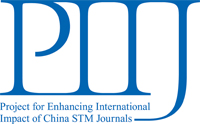Background
Dysmenorrhea is a common gynecologic problem. In some cases, non-medical treatments are considered to be more effective, with fewer side effects. Ginger and exercise are alternative treatments for dysmenorrhea, but in the present study they were not combined.
Objective
In this study, the effects of ginger and exercise on primary dysmenorrhea were compared.
Design, Setting, Participants and Interventions
This randomized controlled trial was performed in Mazandaran University of Medical Sciences, Iran. Two groups of female students were recruited by simple random allocation. In each group, 61 students with moderate to severe primary dysmenorrhea with regular menstrual cycles and without a history of regular exercise were assessed. The ginger group received 250 mg ginger capsules from the onset of menstruation. In the exercise group, belly and pelvic stretching exercises were performed for 10 min, 3 times per week.
Main Outcome Measures
Intensity of pain was assessed according to a visual analogue scale after the first and the second month.
Results
Exercise was significantly more effective than ginger for pain relief (31.57 ± 16.03 vs 38.19 ± 20.47, P = 0.02), severity of dysmenorrhea (63.9% vs 44.3% mild dysmenorrhea, P = 0.02) and decrease in menstrual duration (6.08 ± 1.22 vs 6.67 ± 1.24, P = 0.006), in the second cycle.
Conclusion
Stretching exercises, as a safe and low-cost treatment, are more effective than ginger for pain relief in primary dysmenorrhea.
Trial registration
The trial was registered in www.IRCT.ir with No. 201203118822N2.
 Table of Content
Table of Content














